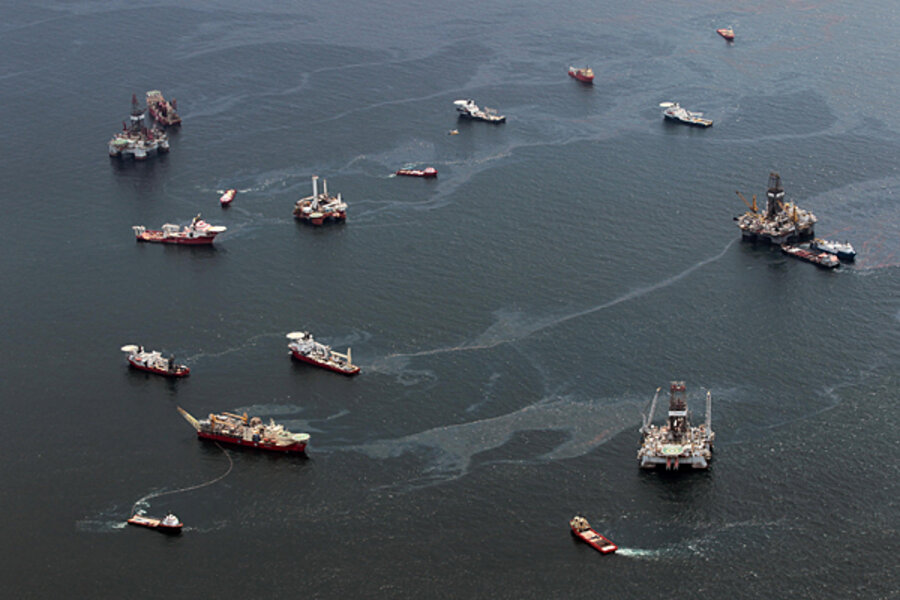Oil spill: more tests after slightly low pressure readings
Loading...
Pressure readings from the damaged well in the Gulf of Mexico are slightly below expectations, which is forcing officials to move forward with increased testing of the containment cap late Friday to make sure the well bore is not breached.
Testing had begun early Thursday afternoon on a new containment cap for the oil spill. That cap is meant to provide a tight seal around the well bore, which is located 5,000 feet below the water’s surface. With the testing under way, oil stopped flowing freely into the ocean and was held within the cap.
Officials hope the new cap can be a kind of temporary holding pen until mid-August, when it is expected that two relief wells will be ready and can be used to drill cement into the well, with the intent to seal it permanently. However, for the new cap to be used safely until then, freezing hydrocarbons cannot breach the cap’s base.
IN PICTURES: The Gulf oil spill's impact on nature
That’s where pressure readings come in. High pressure readings of 7,500 pounds per square inch (psi) or higher are considered a positive sign that the well bore has retained its integrity. A low pressure reading of 5,000 psi is considered troubling and suggests that oil and gas are escaping through cracks in the well bore.
So far, testing from the first 24-hour period shows a pressure reading somewhere in the middle: 6,700 psi.
In a briefing with reporters late Friday afternoon, retired Coast Guard Adm. Thad Allen called this “generally good news” but said that “at this point, there’s enough uncertainty that we are seeing we need to have due diligence moving forward.”
Why the readings are slightly lower than hoped for remains uncertain. It is likely the result of two things, Allen said: After three months of oil gushing into the ocean, the reservoir below the seafloor is depleted of oil, or there is a leak of oil and gas at the well bore. The latter, Allen said, is a much worse scenario.
Officials cannot access the well bore, so its condition is not known. To learn more, Allen ordered BP to begin a six-hour test that will increase monitoring of the seafloor. This will be done through seismic runs that will determine the structural integrity of the surface floor, acoustic sensor tests near the well bore, and a high-tech sensor operated atop a surface vessel that is capable of detecting small bubbles of methane gas at the ocean’s bottom.
Despite an earlier promise to extend the testing a full 48 hours, the operation is shifting to a “conditions-based process,” Allen said, based on an evaluation period every six hours.
The test that Allen ordered Friday will finish in the early hours of Saturday. If the results indicate that a leak has breached the cap, the new cap will be removed, and the operation will immediately revert back to the process of capturing oil via the kill and choke lines of the blowout preventer.
In that scenario, BP will summon the Q4000 and the Helix Producer, two vessels previously used to draw up oil from both lines on the blowout preventer. Until the hookup of the vessels, Allen said, oil would once again flow freely into Gulf waters.
“There is no way to make that transition without the release of oil into the environment,” he said.
Speaking from the Rose Garden earlier Friday, President Obama cautioned the public that it was too soon to declare the containment-cap operation a success.
“I think it’s important that we don’t get ahead of ourselves here. One of the problems ... is that when the oil stops gushing, everybody feels like we’re done,” he said. “And we’re not.”
IN PICTURES: The Gulf oil spill's impact on nature
Related:





